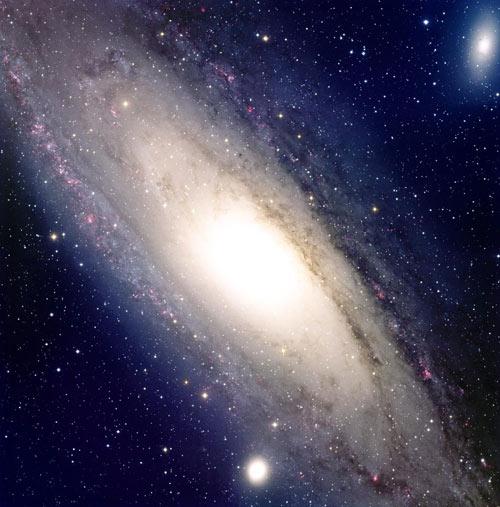New Method Developed to Weigh, Resolve Distant Black Holes
Research presented to the American Astronomical Society meeting in St. Louis today offers astronomers a new, simple method to learn about black holes up to eight billion light years away – thousands of times farther away than black holes can be measured today.
Dr. Marc Seigar, assistant professor of physics and astronomy in UALR’s College of Science and Mathematics, and his research team have concluded that the larger the black hole at the center of a spiral galaxy, the tighter the galaxy’s arms wrap around itself. If correct, the simple relationship would give researchers an easy way to learn about black holes.
“This is a really easy way to determine the masses of these super-massive black holes at the centers of galaxies that are very far away,” Seigar said. “This gives us a way to measure the size of these far away black holes.”
Since super-massive black holes were discovered in nearby galaxies, researchers have been determining their masses by looking at how fast the stars were moving in the very central regions of those galaxies. But that method only works for relatively nearby galaxies, Seigar said.
“For more distant galaxies out to the distances we’re talking about, you have to develop alternative methods,” he added. “And we have developed such a method.”
The method he described to the Astronomical Society involves taking a snapshot of a distant galaxy and measuring how tightly the spiral arms wrap around the galaxy, or the wrapping angle. He determined that the more massive the black hole, the tighter the spiral arms wrap around the galaxy, which indicates a small wrapping angle.
 Seigar’s team studied photographs of 27 spiral galaxies, including our galaxy, the Milky Way, and its nearest neighbor, the Andromeda Galaxy. Galaxies with the smallest black holes had spiral arms with wrapping angles of up to 43 degrees. Those with biggest black holes had spiral arms at angles of only seven degrees between their central bulges.
Seigar’s team studied photographs of 27 spiral galaxies, including our galaxy, the Milky Way, and its nearest neighbor, the Andromeda Galaxy. Galaxies with the smallest black holes had spiral arms with wrapping angles of up to 43 degrees. Those with biggest black holes had spiral arms at angles of only seven degrees between their central bulges.
“One of the important reasons to learn about the every distant black holes is, when you are looking at galaxies very far away, you are looking at them as they were in the past, so you can learn about how masses of black holes grow over time, ” Seigar said.
The black holes he is studying are super-massive black holes that are millions or billions times more massive than our sun. Since they seem to be found at the centers of all galaxies, they could be a key element of how galaxies form in the first place.
His studies also indicate that the mass of a black hole may depend on how centrally concentrated the dark matter is in a galaxy. “But that is a hypothesis that has yet to be proven,” he said. “We’re going to work on that.”
Seigar joined UALR’s faculty in 2007 following a stint as an assistant project scientist and McCue Fellow at the University of California-Irvine. His other experience includes postdoctoral research associate at the University of California-Irvine, adjunct professor at the University of Hawaii-Hilo, postdoctoral research associate at the University of London’s Imperial College and at Ghent University in Belgium. He also was a visiting astronomer at the Space Telescope Science Institute.
Seigar, who earned a Ph.D. in astrophysics at John Moores University in Liverpool, teaches Introduction to Astronomy at UALR as well as performing research in the structure, dynamics and star formation in spiral galaxies, and the nature of intracluster light in clusters of galaxies.
“Since my thesis I have been interested in the overall structure, morphology and dynamics of nearby galaxies, especially disk galaxies,” Seigar said.
He is involved in the Carnegie-Irvine Nearby Galaxies Survey (CINGS), a comprehensive optical and infrared imaging survey of the 600 brightest galaxies in the southern-hemisphere sky, being carried out at the 2.5-meter Du Pont telescope at Las Campanas Observatory. He is also involved in the Arkansas Galaxy Evolution Survey (AGES), part of which is to conduct a census of super-massive black holes in the universe.
The British Broadcasting Company conducted an interview with Seigar following his presentation this week at the American Astrological Society.